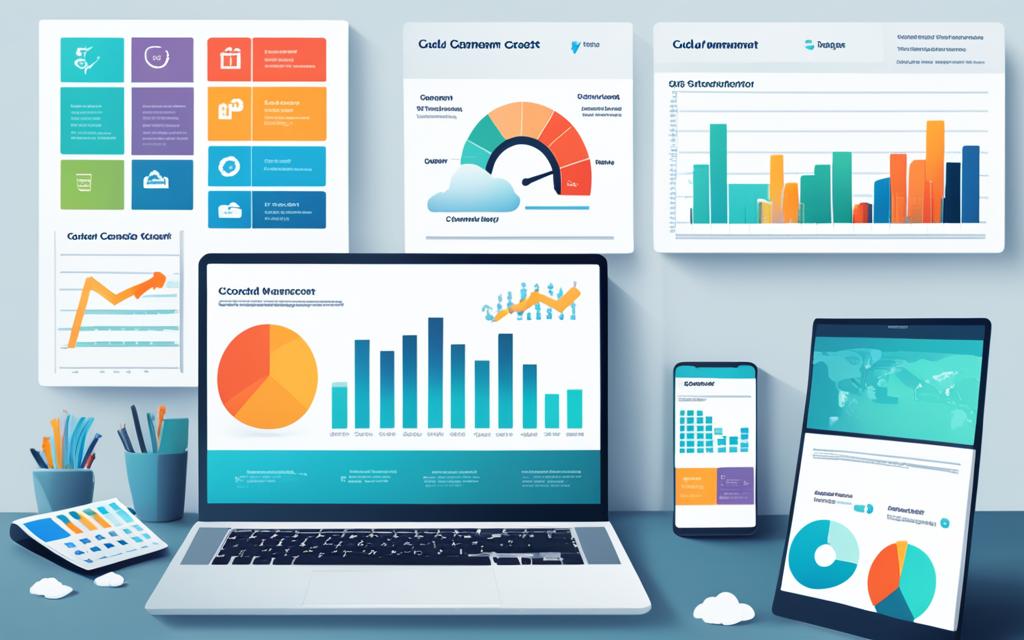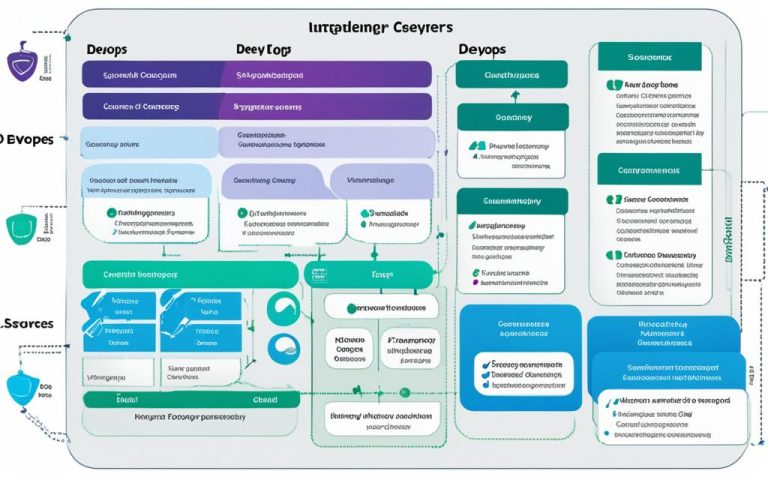Cloud spending is on the rise, with forecasts indicating that it will exceed $600 billion this year. However, with high costs being cited as a top challenge by 82% of IT professionals, it is crucial for businesses to focus on cloud cost management. This process involves monitoring and managing cloud resources to minimize expenses and maximize return on investment. By implementing effective cloud cost management strategies, organizations can control their cloud spend and optimize their cloud spending.
Cloud cost management encompasses various activities, including tracking usage, setting budgets, identifying cost-saving opportunities, and implementing them. This proactive approach not only helps businesses reduce costs but also enables faster innovation, predictability in expenses, strategic planning, scalability, and enhanced visibility and security in their cloud infrastructure.
What is Cloud Cost Management?
Cloud cost management is the process of monitoring cloud resources to minimize expenses and identify cost-saving opportunities. It involves tracking the usage of cloud resources, setting budgets, and implementing strategies to optimize costs and maximize return on investment. Effective cloud cost management enables businesses to innovate faster, ensure predictability in costs, plan strategically, scale their infrastructure, and maintain visibility and security.
Cloud cost management is essential in today’s digital landscape where cloud spending is projected to exceed $600 billion. With 82% of IT professionals citing high costs as a top cloud challenge, organizations need to proactively manage their cloud expenses to minimize budget constraints. By actively monitoring cloud resources and minimizing expenses, businesses can unlock valuable cost-saving opportunities and optimize their overall cloud spending.
The Benefits of Cloud Cost Management
Cloud cost management offers several major benefits to organizations. By implementing effective cost management strategies, businesses can achieve faster innovation, predictability in costs, strategic planning, scalability, enhanced visibility, and improved security.
Faster Innovation
One of the key advantages of cloud cost management is its ability to free up resources that can be allocated to new initiatives. By optimizing cloud spending and eliminating unnecessary expenses, organizations can redirect their budget towards innovation and product development. This allows businesses to stay competitive in the digital landscape and bring new solutions to market more quickly.
Predictability in Costs
Cloud cost management ensures predictability in costs by carefully monitoring and analyzing cloud resource usage. By setting budgets and evaluating cost-saving opportunities, organizations can prevent unexpected jumps in expenses and have better control over their cash flow. This predictability enables businesses to plan and allocate their resources effectively, avoiding any financial surprises.
Strategic Planning
Tracking cost data and understanding cloud resource usage plays a crucial role in strategic planning. By analyzing these insights, organizations can shape their cloud, product, and pricing strategy. Armed with accurate information about costs, businesses can make informed decisions about resource allocation, optimize their cloud infrastructure, and align their offerings with customer demands and market trends. Strategic planning facilitated by cloud cost management empowers organizations to stay ahead of the competition and adapt to changing business needs.
Scalability
Another benefit of cloud cost management is improved scalability. By optimizing cloud infrastructure and eliminating wasteful spending, organizations can easily scale their tools and practices as they grow. The ability to scale efficiently enables businesses to meet increasing demand without incurring unnecessary expenses. This flexibility allows for a seamless expansion of operations and ensures that the cloud infrastructure can support the organization’s growing needs.
Enhanced Visibility and Security
Cloud cost management tools provide organizations with visibility into all their cloud resources and services. This visibility enhances security by identifying any potential vulnerabilities or risks. Additionally, optimizing cloud spending frees up budget that can be allocated towards security-related expenses, ensuring that the organization’s cloud infrastructure remains secure and protected against cyber threats. Enhanced visibility and security go hand in hand, providing organizations with peace of mind and the ability to focus on their core business objectives.
Overall, cloud cost management offers significant advantages to organizations. It promotes faster innovation, predictability in costs, strategic planning, scalability, and enhanced visibility and security. By leveraging the power of cloud cost management, businesses can optimize their cloud spending and achieve better financial control, ultimately driving growth and success.
How to Manage Cloud Costs
Managing cloud costs can be a daunting task that consumes valuable time and resources. Organizations often find themselves juggling different commitment options, struggling to keep track of market pricing, and manually implementing cost-saving recommendations. Thankfully, cloud cost management tools offer a solution that automates and streamlines this process.
By leveraging cloud cost management tools, organizations can reduce cloud spending with less reliance on manual processes. This enables engineers to shift their focus towards building and innovating rather than being bogged down by tedious cost management tasks. These tools provide a range of features, including:
Monitoring: Constantly track and analyze cloud resource usage to identify areas for optimization.
Rightsizing: Optimize resource allocation by ensuring that instances and services are appropriately sized for their workload.
Autoscaling: Automatically adjust resources based on demand, ensuring optimal performance without overspending.
Optimization: Identify cost-saving opportunities and recommend strategies to optimize cloud spending.
With these tools in place, organizations can streamline their cloud cost management processes, resulting in more efficient and cost-effective operations. Cloud cost management tools provide invaluable assistance in navigating the complexities of cloud spending, empowering businesses to make data-driven decisions and maximize their return on investment.

Best Cloud Cost Management Tools Comparison
| Tool | Features | Cost |
|---|---|---|
| Tool 1 | Monitoring, rightsizing, autoscaling, optimization | $X/month |
| Tool 2 | Monitoring, optimization | $X/month |
| Tool 3 | Rightsizing, optimization | $X/month |
| Tool 4 | Monitoring, autoscaling | $X/month |
Conclusion
Cloud cost management plays a vital role in helping organizations control and optimize their cloud spending. As the complexity of cloud usage and pricing continues to grow, it becomes imperative to leverage automation and utilize specialized tools to streamline expenses. Fortunately, there are over 20 cloud cost management tools available that can assist organizations in reducing their cloud spending and maximizing their return on investment.
By implementing these powerful tools, businesses can achieve cost optimization and unlock a range of benefits, including faster innovation, strategic planning, scalability, and enhanced visibility and security in their cloud infrastructure. These tools provide valuable features such as monitoring, rightsizing, autoscaling, and optimization, enabling organizations to drive efficiency and minimize manual effort in managing cloud costs.
With the ability to automate and streamline the management of cloud spending, these tools allow engineers to focus on building and innovating instead of getting bogged down in manual processes. This not only helps organizations save valuable time and resources but also empowers them to make data-driven decisions and optimize their cloud spending effectively.
FAQ
What is cloud cost management?
Cloud cost management is the process of monitoring and managing cloud resources to minimize expenses. It involves tracking cloud resource usage, setting budgets, identifying cost-saving opportunities, and implementing them. The goal is to optimize costs and maximize return on investment.
What are the benefits of cloud cost management?
Cloud cost management offers several major benefits. It enables faster innovation by freeing up resources that can be used for new initiatives. It ensures predictability in costs, preventing unexpected jumps in expenses and allowing for better cash flow management. Strategic planning is facilitated by tracking cost data and understanding usage, which helps organizations shape their cloud, product, and pricing strategy. Scalability is improved by optimizing cloud infrastructure, making it easier to scale tools and practices as the organization grows. Lastly, cloud cost management tools provide visibility into all cloud resources and services, enhancing security and freeing up budget for security-related expenses.
How can cloud costs be managed effectively?
Managing cloud costs can be challenging and time-consuming. However, there are cloud cost management tools available that can automate and streamline the process. These tools offer features such as monitoring, rightsizing, autoscaling, and optimization. They help organizations reduce cloud spending with less manual effort, allowing engineers to focus on building and innovating.



















